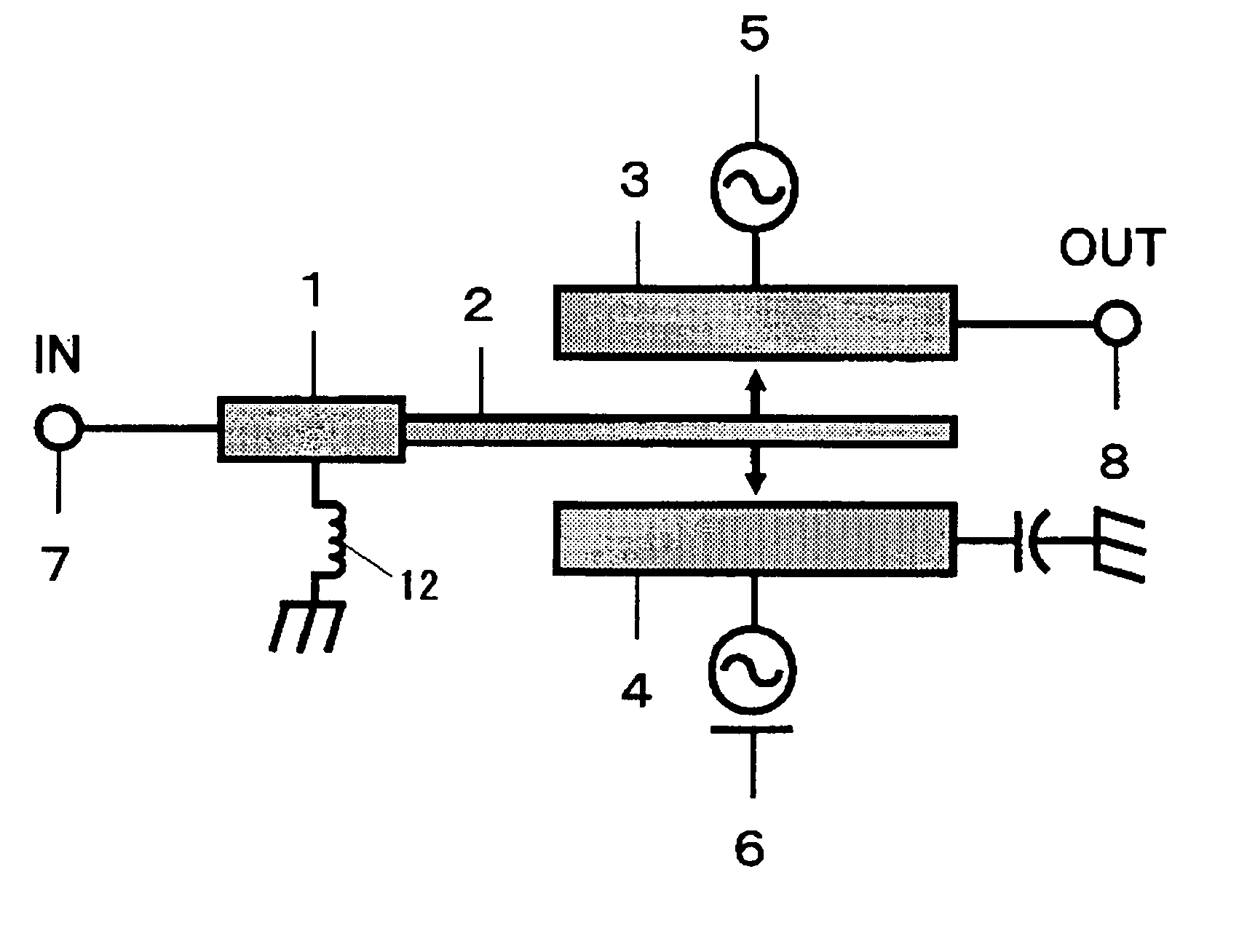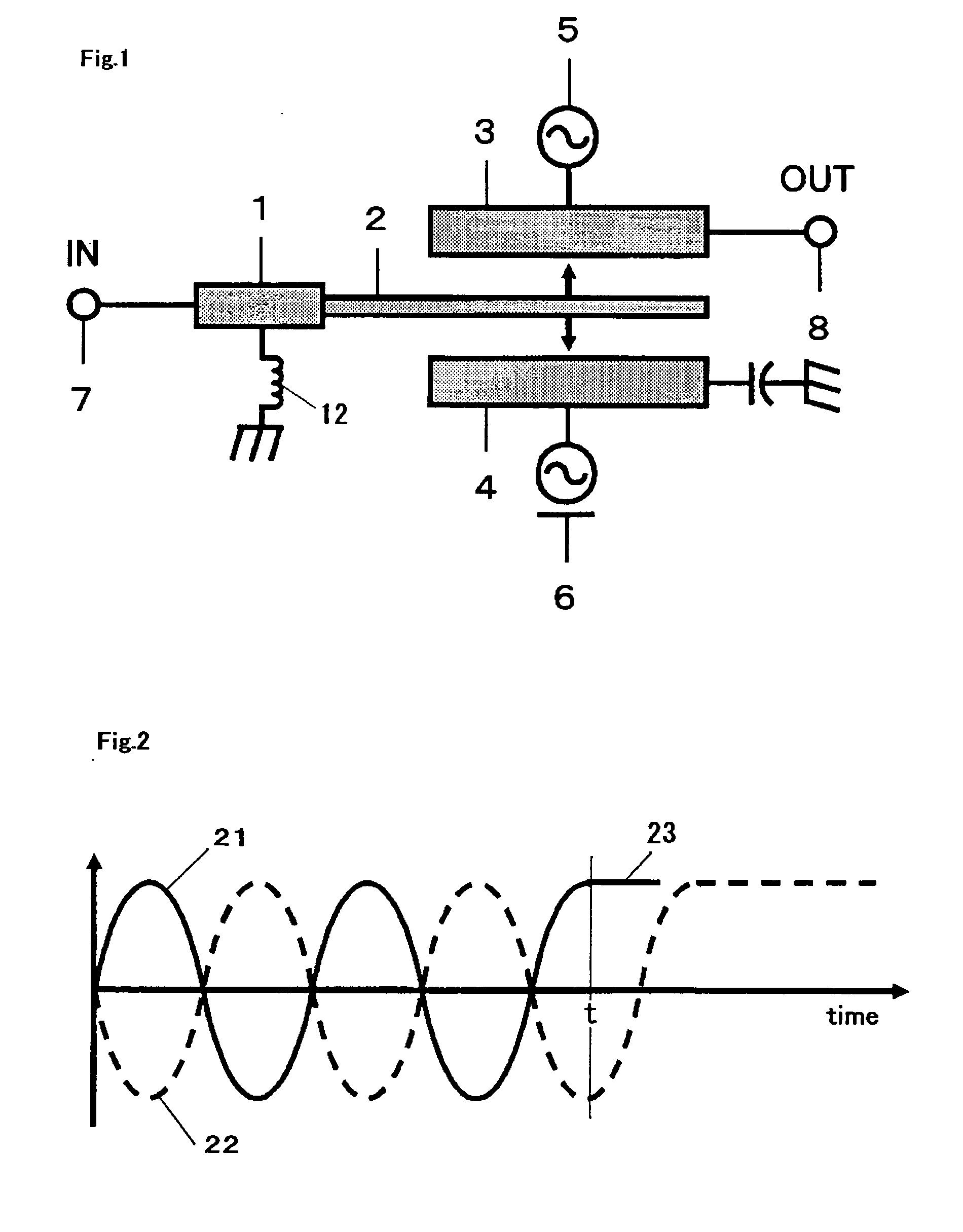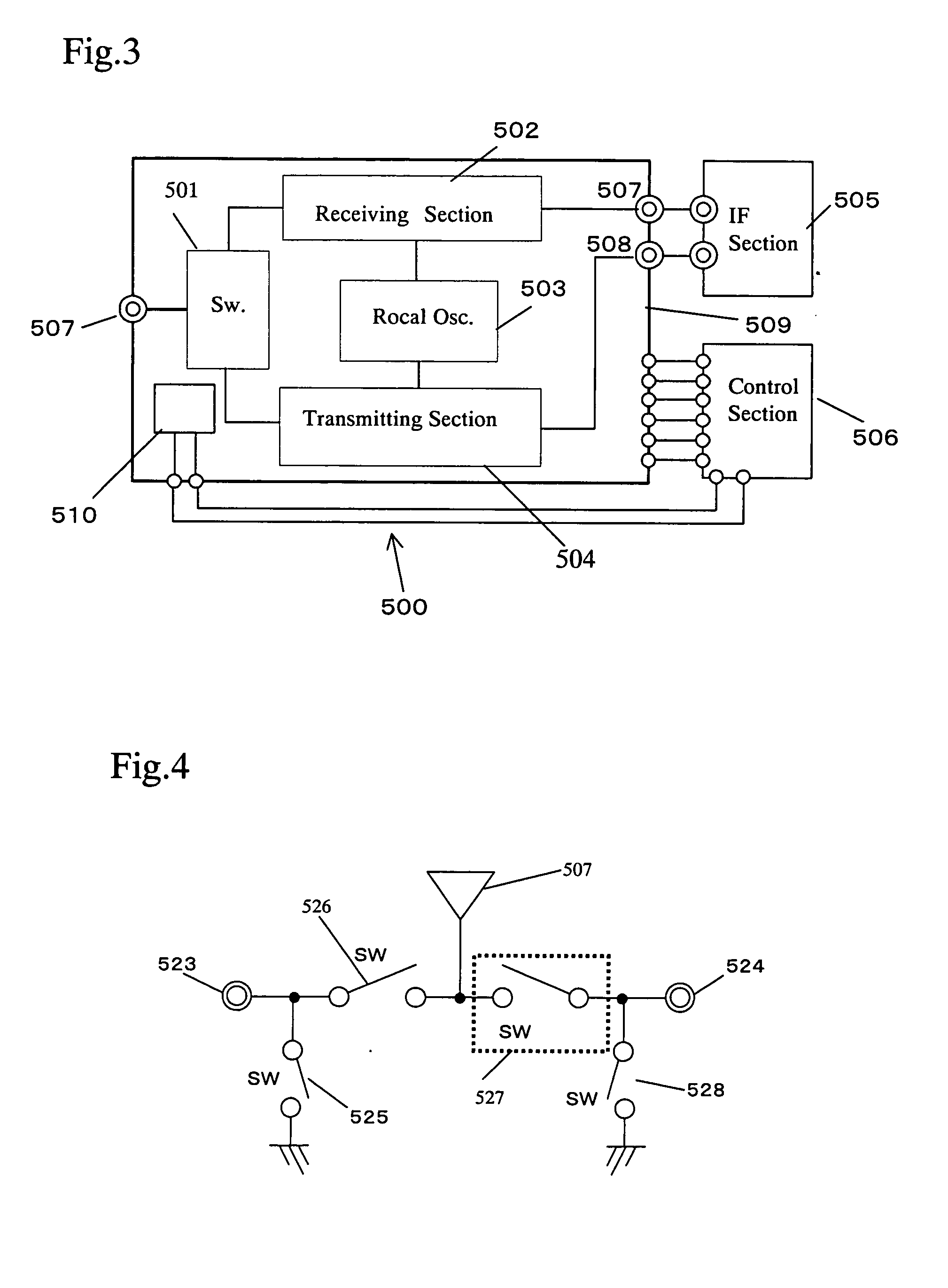Switch
a technology of switch and movable member, which is applied in the field of switch, can solve the problems of forming incorrect signal paths, low response speed of movable members, vibration of elements, etc., and achieves the effects of improving signal propagation characteristics, low consumption power, and high speed respons
- Summary
- Abstract
- Description
- Claims
- Application Information
AI Technical Summary
Benefits of technology
Problems solved by technology
Method used
Image
Examples
first exemplary embodiment
1. First Exemplary Embodiment
[0042]FIG. 1 depicts a plan view of a switch 1 in embodiment 1 of the present invention. An on-side electrode 3 is attached with an on-side control power supply 5 while an off-side electrode 4 is with an OFF-side control power supply 6. When the switch is on, a movable member 2 is to be attracted on the on-side electrode 3. The signal inputted through an input port 7 propagates to an output port 8 through the movable member 2 and on-side electrode 3. When the switch is off, the movable member 2 is to be attracted on the off-side electrode 4. The signal inputted through the input port 7 propagates to the ground through the movable member 2 and off-side electrode 4.
[0043]FIG. 2 shows a relationship between a control signal and a position of the movable member 2 in embodiment 1. FIG. 2 shows a control signal to be supplied to the on-side electrode 3 on one side. The on-side electrode 3 and off-side electrode 4 are provided with control signals 21 oppositel...
second exemplary embodiment
2. Second Exemplary Embodiment
[0054]FIG. 3 shows a schematic configuration diagram of a switch in embodiment 2 of the invention. A transmitting / receiving section 500 of a radio transceiver is configured with a transmission / reception switching section 501, a receiving section 502, a local oscillator 503, a transmitting section 504, a control section 506, and an IF section 505. The transmission / reception switching section 501 is switched over to a receiving end and a transmission end, depending upon a control signal from the control section 506.
[0055] In the case of signal reception, an RF signal inputted at an antenna end 507 is inputted to the receiving section 502 through the transmission / reception switching section 501 where the signal is amplified and frequency-converted and thereafter outputted, at an IF terminal 507, to the IF section 505. In the case of sending a signal, operation is reverse to the above, i.e. the signal outputted from the IF section 505 is inputted to the tr...
third exemplary embodiment
3. Third Exemplary Embodiment
[0075] In using the switch, where the movable member is vibrated at all times, there is a problem that a signal is propagated to the output port with a period of a self-resonance of the movable member. As a switch this problem is solved, shown is a method that two switches are connected in series, for use as one switch.
[0076]FIG. 11 shows a plan view of a switch 1 in embodiment 3 of the invention. A switch 1a and a switch 1b are connected in series. The switch 1a has a movable member 2a, an on-side electrode 3a and an off-side electrode 4a. The on-side electrode 3a is connected with an on-side control power supply 5a while the off-side electrode 4a is connected with an off-side control power supply 6a. Similarly, the switch 1b has a movable member 2b, an on-side electrode 3b and an off-side electrode 4b. The on-side electrode 3b is connected with an on-side control power supply 5b while the off-side electrode 4b is connected with an off-side control pow...
PUM
 Login to View More
Login to View More Abstract
Description
Claims
Application Information
 Login to View More
Login to View More - R&D
- Intellectual Property
- Life Sciences
- Materials
- Tech Scout
- Unparalleled Data Quality
- Higher Quality Content
- 60% Fewer Hallucinations
Browse by: Latest US Patents, China's latest patents, Technical Efficacy Thesaurus, Application Domain, Technology Topic, Popular Technical Reports.
© 2025 PatSnap. All rights reserved.Legal|Privacy policy|Modern Slavery Act Transparency Statement|Sitemap|About US| Contact US: help@patsnap.com



